Important Links
Product Page
Store Page
Quick Start Guide
Assembly Instructions
Bill of Materials
Schematic
Drill Template
Capacitor & Resistor Lookup Guide
Please note!!
We have made a couple of helpful changes to the build order of this pedal. We are working to update the instructions, but in the meantime, please watch the video below to see how it all fits together BEFORE you start the project. The machine pin headers are no longer soldered directly into the PCB at the beginning, they are soldered to the pots first.
Thank you for purchasing our NEW (July 2014 Edition) Ratatak LM308 guitar pedal kit. previous versions versions did not have a case option, and the knobs did not turn the ‘correct ways’. Less mess and fuss and now this pedal can be built with almost no wiring (none, but the 9V battery clip) If you are looking to build this kit in a larger or different enclosure, please consult our WIRED version of this kit. Please follow these instructions in order, as it can be tricky to build and insert into the enclosure.
PLEASE FOLLOW THE BOM AND NOT JUST THE PCB, THE BOM HAS THE BEST UPDATED COMPONENT VALUES.
RESISTORS & DIODES
It is really helpful to build your kit from the shortest components to the tallest. That means that every time you need to flip the PCB over to solder and clip leads, you can rest the PCB on a flat surface and your board will be flat as well (much easier for soldering). So lets start with populating the resistors and diodes. Remember that diodes are polarized components. You must orient the diodes by matching the stripe on the diode to the white stripe on the PCB.
3-pin Headers, IC Socket
Some kits include a taller pot and do not need these headers. Now place the 3-pin metal headers in as shown above and carefully flip the PCB over and solder them into place. Notice that there is a plastic black sleeve that holds the header pins together. DO NOT overheat these while soldering as they will melt and be harder to use. If you are having trouble keeping them in the board when you flip it over, you can use a little piece of tape to hole them in place while soldering.
Next up is the IC socket. This has a semi-circular notch in it that needs to align with a similar looking notch in the silkscreen. When you are sure that it is lined up properly, carefully flip your project over and solder everything in place.
Ceramic Capacitors
Now we can populate the ceramic capacitors. The ceramic capacitors are non-polarized, so it does not matter which direction they face when populated. It will make any potential troubleshooting later easier if you populate them in a way that makes the code on the side easier to read
Now carefully flip your project over and solder everything in place.
Transistor, IC, Electrolytic Capacitors
When populating the transistor, take care to line up the flat side of it with the same indicated flat side on the silkscreen, as shown in the picture above. Solder in place.
Next, insert the IC into it’s socket. Make sure that the semi-circular notch on the end of the IC matches up with the same notch on both the socket and the silkscreen.
Now we can populate the electrolytic capacitors. These are polarized, so when inserting them into the PCB, make sure to align the longer lead with the little ‘+’ sign that is present on the silkscreen of the PCB. Once you’re happy with the placement, carefully flip your project over and solder everything into place.
DC Jack, 1/4 Inch Jacks and Battery Clip
Next up is the DC jack. Populate it as straight as possible, and then solder it in place. To help with getting it straight, it is recommended to solder just one leg of it (the furthest back one is easiest), and then gently apply pressure while re-heating the solder joint to guide it into place.
Now we can populate the Input and Output jacks. Keep in mind, one is stereo (input) and out is mono (output). Populate them according to the BOM, and then carefully flip your project over and solder them in place. Take your time with these, and make sure they are nice and flat to the board. When we insert this pedal into it’s case, these will be what aligns everything to the case before we solder everything down, so you want them to be nice and straight.
When populating the battery clip, first insert the two wires through the stress relief holes, and then insert them into the solder pads. Make sure to put the red wire into the spot marked ‘+’ and the black on into the spot marked ‘-‘. When you are happy with their placement, carefully flip the project over and solder the wires in place. Then pull any excess wire back through the stress relief holes so that the battery clip is tight, as shown above.
Clipping Diode Switch
Flip your PCB over and align and populate the clipping diode selector switch and solder. This 4 way switch is really exciting and will give you many great tonal options. The First 2 switches are (from Left to Right) silicone diodes. By pressing both of those down you will select symmetrical silicone clipping. By pressing 3 & 4 down (and NOT 1 & 2) you will select symmetrical germanium clipping. Only one switch down will be asymmetrical, BUT try out various combinations of clipping in order to product unique clipping options.
Potentiometers, LED and Stomp Switch
Please note: Some kits include a taller pot and do not need to be trimmed.
The 9MM potentiometers need to be trimmed in a few places to properly fit into this project. All 4 PCB mount clips should be cut to the base of the body of the potentiometer. Please see photos below:
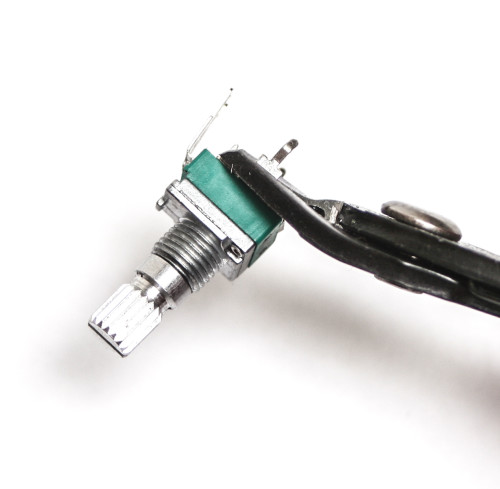
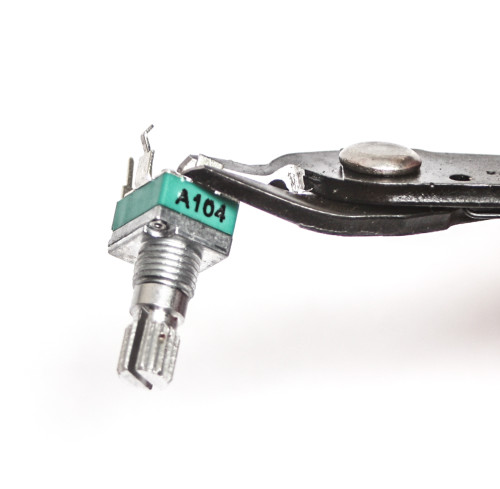
Clipping Potentiometers
Push the pot pins into the 3-pin headers, then solder the pots to the pins. Don’t solder the pins into the PCB yet!!
Now we are going to populate all the controls for the pedal, including the 3pdt stomp switch, the potentiometers and the LED. Make sure you populate everything according to the BOM, and take care with the LED. It is polarized, so make sure that you align the flat side of the LED with the same indicated flat side on the silkscreen. When placing the 3pdt stomp switch, it should only fit one way, but make sure that the two flat sides of the base are facing the front and back of the boards.
DO NOT SOLDER ANYTHING YET!!
Case Prep
Next up, we are going to attach the LED bezel to the case. Insert the bezel through the case, and tighten the nut down on the back side.
Assembling the Pedal
THIS NEXT PART CAN BE TRICKY. PLEASE FOLLOW INSTRUCTIONS CAREFULLY.
Now we are ready to assemble the pedal. Carefully life up your un-soldered pedal and slide it into the enclosure. You may need to use a small screwdriver to help ‘guide’ things into their proper holes. When you can see the side jacks aligned with their respective holes on the side of the case, carefully insert their screws to hold everything in place while soldering.
Next, carefully put the pot washers and nuts on the shaft of the potentiometers, and tighten them only a couple turns for now. You want to tighten them enough so that the nuts have a good hold on the threads, but not so much that you pull the legs out of the PCB. Please see the picture below for proper alignment.
Go ahead and slip the large washer over the stomp switch, and then tighten the nut down on top of that.
When you are satisfied with the alignment of everything, solder just one leg or pin of each component into place. Then double check the alignment on the top of the case to make sure that nothing is crooked. If it is, gently apply pressure to the top and re-heat the solder joint. This should seat it flat against the case. When you’re happy with the alignment of everything, finish soldering everything in place.
Final Assembly
At this point, everything should be soldered in place, and ready to go. Grab your trusty socket (or wrench/pliers/fingers) and tighten the nuts all the way down. Make sure not to overtighten them, as you can damage the components! Then you can put the knobs on top of the pots, and tighten them down as well.
Before putting the back on the project, it is recommended to test out your pedal and make sure everything works. That way if you need to check something or re-flow a solder joint, you can get to most of them easily.
CONGRATS!
You have assembled your rat clone and are ready to shred. If you have any issues after putting the project in a case, carefully remove it and look for a connection that could have broken and repair.
BE SURE TO USE ONLY A 9V CENTER NEGATIVE POWER BRICK OR A 9V Battery.
Top



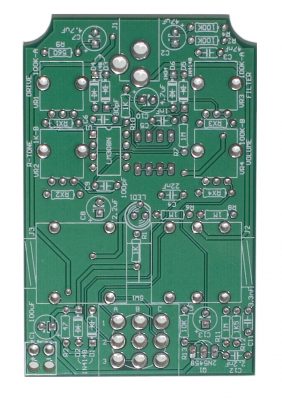
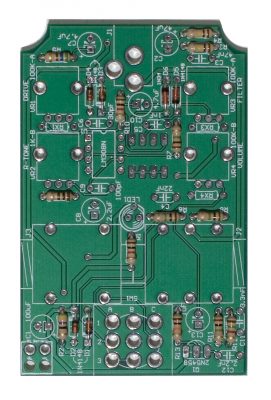
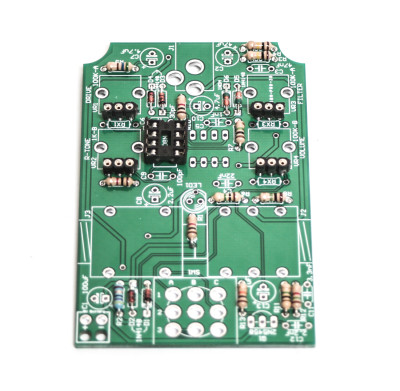
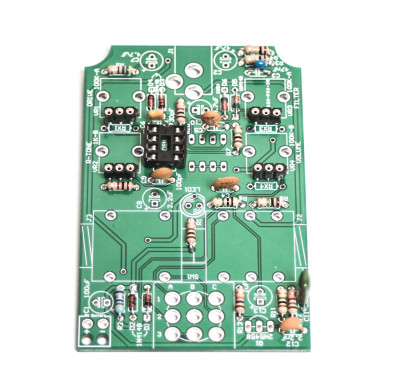
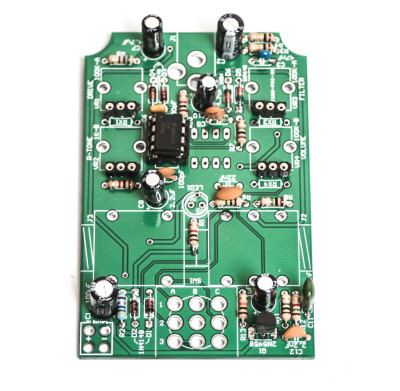
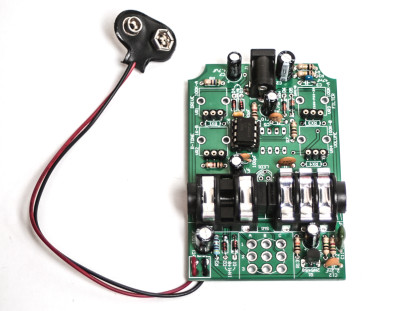
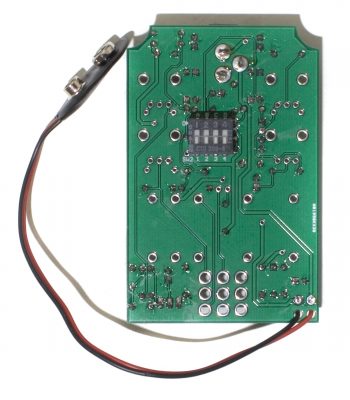
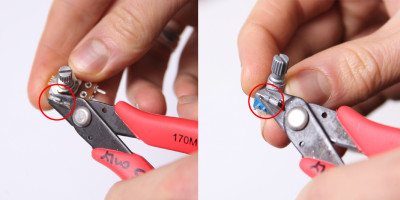
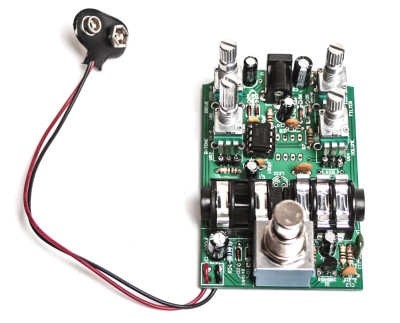
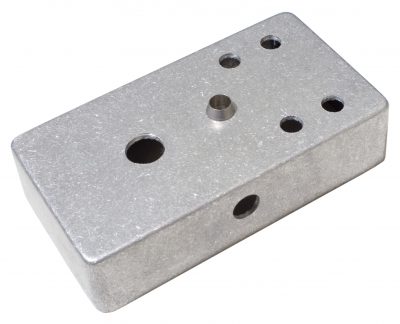
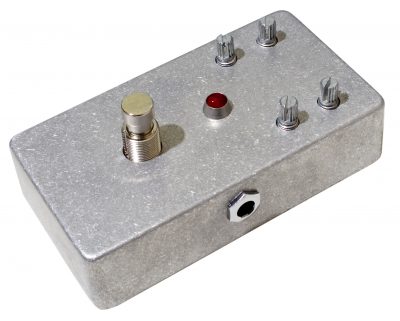
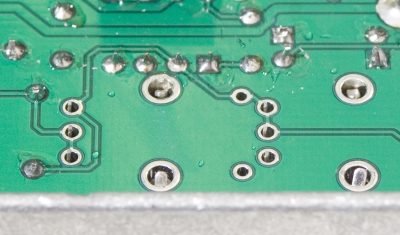
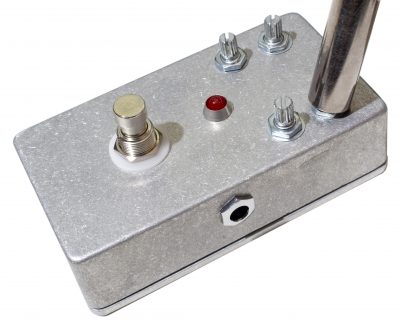
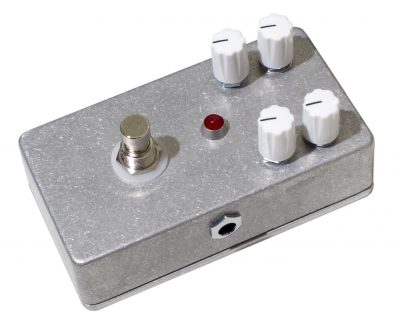
Is there any difference between the pcb’s for the wired and the pcb-mount versions? Or is it just the kit contents?
great product, just a note. The drill template is the one for the wired version not the PCB one
Hey Alan,
Thanks for the clarification!
The drill template IS in fact meant for the wired version.
-Zach